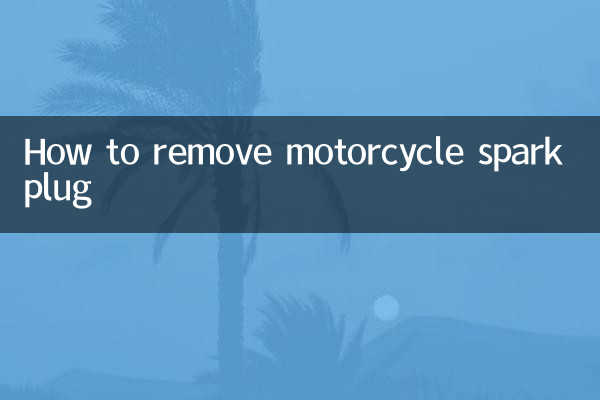How to remove motorcycle spark plug
Motorcycle spark plugs are a key component of the engine ignition system. Regular inspection and replacement of spark plugs can ensure efficient engine operation. This article will introduce in detail the removal steps, precautions and FAQs of motorcycle spark plugs to help you easily complete this maintenance task.
1. Preparation work

Before removing the spark plug, prepare the following tools and materials:
| Tools/Materials | Purpose |
|---|---|
| spark plug wrench | Designed for removing and installing spark plugs |
| socket wrench | Adapted to spark plug size (usually 16mm or 18mm) |
| compressed air tank | Clean dust and impurities around spark plugs |
| new spark plug | Replace old spark plugs (matching model required) |
| Torque wrench | Make sure you apply the correct torque when installing |
2. Disassembly steps
1.Shut down the engine and allow it to cool: Make sure the motorcycle engine is turned off and cooled down for at least 30 minutes to avoid burns.
2.Disconnect spark plug cap: Gently pull off the spark plug cap, being careful not to pull hard on the wire.
3.Clean the surrounding area: Use compressed air to remove dust and dirt around the spark plug to prevent impurities from falling into the cylinder.
4.Remove spark plug: Put the spark plug wrench on the spark plug, turn it counterclockwise to loosen it, and then twist out the spark plug by hand.
5.Check spark plug status: Observe the color of the electrode and insulator of the old spark plug to determine the engine operating condition (see table below).
| spark plug status | Possible reasons |
|---|---|
| The electrode is grayish white | The mixture is too lean or the ignition time is too early |
| The electrode is black and greasy | The mixture is too rich or oil penetrates into the combustion chamber |
| Electrode severely corroded | The spark plug life has expired and needs to be replaced |
3. Install new spark plugs
1.Adjust electrode gap: Use a feeler gauge to check the electrode gap of the new spark plug, which is usually 0.7-0.9mm (refer to the vehicle manual).
2.Manually screw in the spark plug: First screw the spark plug into the threaded hole by hand to ensure there is no misalignment.
3.Use a torque wrench to tighten: Tighten the spark plug according to the manufacturer's recommended torque value (usually 20-30Nm) to avoid being too tight or too loose.
4.Reattach the spark plug cap: Make sure the spark plug cap is firmly installed and not loose.
4. Frequently Asked Questions
Q: How often should spark plugs be replaced?
A: It is recommended to replace ordinary nickel alloy spark plugs every 10,000 to 20,000 kilometers, while platinum or iridium spark plugs can be replaced every 30,000 to 50,000 kilometers.
Q: What should I do if the spark plug breaks during disassembly?
A: Stop the operation immediately, use a special broken wire removal tool or contact professional maintenance personnel to handle it.
Q: What will be the impact if the spark plug is not tightened?
A: It may cause air leakage, engine power reduction or spark plug overheating and damage.
5. Things to note
1. Be sure to disconnect the negative terminal of the battery before disassembly to avoid accidental ignition.
2. It is prohibited to operate when the engine is at high temperature to prevent burns or spark plug thread deformation.
3. Do not drop the spark plug during installation, the ceramic insulator is fragile.
4. The spark plug models and torque values of different models may be different, so be sure to check the vehicle manual.
Through the above steps, you can complete the removal and replacement of motorcycle spark plugs safely and efficiently. Regular spark plug maintenance not only improves vehicle performance but also extends engine life. If you encounter complex problems, it is recommended to seek help from professional technicians.

check the details

check the details